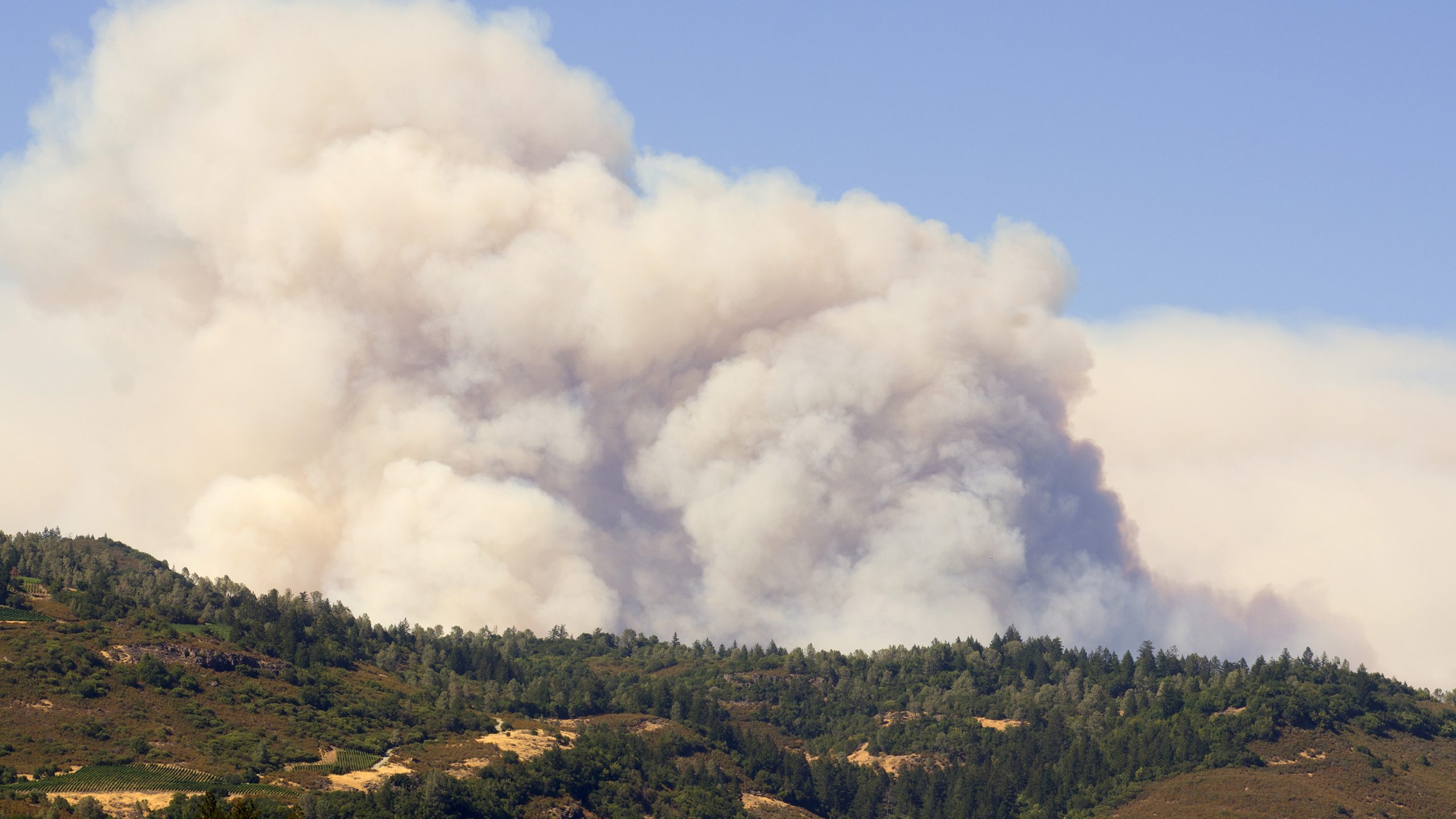Saskatchewan Wildfires: Rising Temperatures Increase Fire Danger

Table of Contents
The Link Between Rising Temperatures and Wildfire Risk in Saskatchewan
A clear correlation exists between rising temperatures, prolonged dry spells, and the increased risk of devastating Saskatchewan wildfires. Saskatchewan has experienced a notable increase in average temperatures over the past few decades, contributing significantly to drier vegetation and longer fire seasons. Data from Environment and Climate Change Canada shows a consistent upward trend, with some regions experiencing temperature increases exceeding the global average. This warming trend directly impacts wildfire risk in several key ways:
- Increased Evaporation Rates: Higher temperatures lead to increased evaporation rates, resulting in drier vegetation that becomes highly flammable. This creates a landscape primed for rapid wildfire spread.
- Longer Fire Seasons: Warmer springs and autumns mean longer fire seasons, extending the period when wildfires are most likely to occur and making suppression efforts more challenging.
- Increased Intensity and Spread: Dry conditions and strong winds, often associated with higher temperatures, contribute to faster-spreading and more intense wildfires, making them harder to contain.
- Specific Examples: The 2023 wildfire season in Saskatchewan provided stark evidence of this link, with several significant blazes directly correlated to periods of extreme heat and drought. These fires caused widespread damage, requiring significant resources for suppression and recovery.
Impact of Saskatchewan Wildfires on the Environment and Ecosystem
Saskatchewan wildfires inflict significant ecological damage, impacting biodiversity, habitats, and overall ecosystem health. The immediate and long-term consequences are far-reaching:
- Damage to Forests and Grasslands: Wildfires destroy vital habitats for countless plant and animal species, leading to biodiversity loss and habitat fragmentation. The vast boreal forests and grasslands of Saskatchewan are particularly vulnerable.
- Threat to Endangered Species: Many endangered species and their habitats are threatened by the increased frequency and intensity of Saskatchewan wildfires. The loss of crucial food sources and shelter can lead to population declines.
- Long-Term Effects on Soil Fertility and Water Quality: Wildfires can alter soil structure, reducing its fertility and increasing the risk of erosion. Ash runoff can also contaminate water sources, impacting water quality and aquatic ecosystems.
- Carbon Emissions: Burning vegetation releases significant amounts of carbon dioxide into the atmosphere, exacerbating climate change and creating a vicious cycle of rising temperatures and increased wildfire risk.
Protecting Communities from Saskatchewan Wildfires: Prevention and Response
Combating the threat of Saskatchewan wildfires requires a multi-pronged approach that combines effective prevention strategies with robust response mechanisms. This includes:
-
Fire Prevention Measures: Controlled burns, under carefully managed conditions, can reduce fuel loads and lessen the intensity of future wildfires. Public awareness campaigns are crucial in educating residents about fire safety practices and responsible land management.
-
Effective Wildfire Response: Early detection is paramount. Investing in advanced technologies, such as improved aerial surveillance and real-time monitoring systems, is vital. Rapid and effective suppression efforts are necessary to control the spread of wildfires before they reach communities. The role of government agencies such as the Saskatchewan Public Safety Agency is crucial in coordinating these efforts.
-
Community Preparedness: Developing and practicing comprehensive community evacuation plans is essential. Residents need to be informed about wildfire risks and know what to do in case of a wildfire emergency.
-
Importance of Fire Bans and Restrictions: Implementing timely fire bans and restrictions during high-risk periods is essential to prevent human-caused wildfires.
-
Public Education on Fire Safety Practices: Educating the public about safe campfire practices, the proper disposal of cigarettes, and other fire safety measures is crucial in reducing human-caused fires.
-
Investing in Improved Wildfire Detection and Suppression Technologies: Investing in advanced technologies, like fire detection satellites and improved firefighting equipment, is vital for improving response times and effectiveness.
-
Community Preparedness and Evacuation Plans: Developing comprehensive community evacuation plans and ensuring residents are aware of them can save lives and property during a wildfire emergency.
The Economic Consequences of Saskatchewan Wildfires
Saskatchewan wildfires carry a significant economic toll, impacting various sectors and causing substantial financial losses:
- Loss of Timber Resources and Agricultural Land: Wildfires can devastate timber resources, impacting the forestry industry. Agricultural land can also be destroyed, impacting crop yields and livestock.
- Damage to Tourism Infrastructure: Wildfires can damage tourism infrastructure, such as parks, lodges, and trails, resulting in lost revenue and impacting the tourism sector.
- Costs of Emergency Response and Recovery Operations: Fighting wildfires, providing emergency services, and undertaking recovery efforts are extremely expensive.
- Impact on Local and Regional Economies: The economic consequences of Saskatchewan wildfires can ripple through local and regional economies, impacting employment, business activity, and overall economic growth.
Understanding and Addressing the Threat of Saskatchewan Wildfires
The evidence is clear: rising temperatures are significantly increasing the risk of devastating Saskatchewan wildfires. The ecological damage, threat to communities, and economic consequences necessitate proactive and comprehensive measures. We must prioritize fire prevention, invest in improved response capabilities, and strengthen community preparedness. By understanding the complex interplay of factors driving Saskatchewan wildfires, and by actively pursuing effective mitigation strategies, we can significantly reduce the risk and protect our province's valuable natural resources and communities. Learn more about Saskatchewan wildfire safety, support local Saskatchewan wildfire prevention initiatives, and stay informed about Saskatchewan wildfire alerts and warnings. Together, we can work towards reducing Saskatchewan wildfire risk and building a more resilient future.

Featured Posts
-
 Elon Musks Awkward Saudi Encounter With Donald Trump
May 31, 2025
Elon Musks Awkward Saudi Encounter With Donald Trump
May 31, 2025 -
 Analyzing Trumps Iran Strategy And Its Impact On Israel
May 31, 2025
Analyzing Trumps Iran Strategy And Its Impact On Israel
May 31, 2025 -
 Us Fda Accelerates Sanofis Chlamydia Vaccine Development With Fast Track Designation
May 31, 2025
Us Fda Accelerates Sanofis Chlamydia Vaccine Development With Fast Track Designation
May 31, 2025 -
 Saint Jean De Luz Face Au Recul Du Trait De Cote Adaptation Et Defis Pour La Preservation Du Littoral
May 31, 2025
Saint Jean De Luz Face Au Recul Du Trait De Cote Adaptation Et Defis Pour La Preservation Du Littoral
May 31, 2025 -
 Elon Musk Resigns From Trumps Administration What It Means
May 31, 2025
Elon Musk Resigns From Trumps Administration What It Means
May 31, 2025
